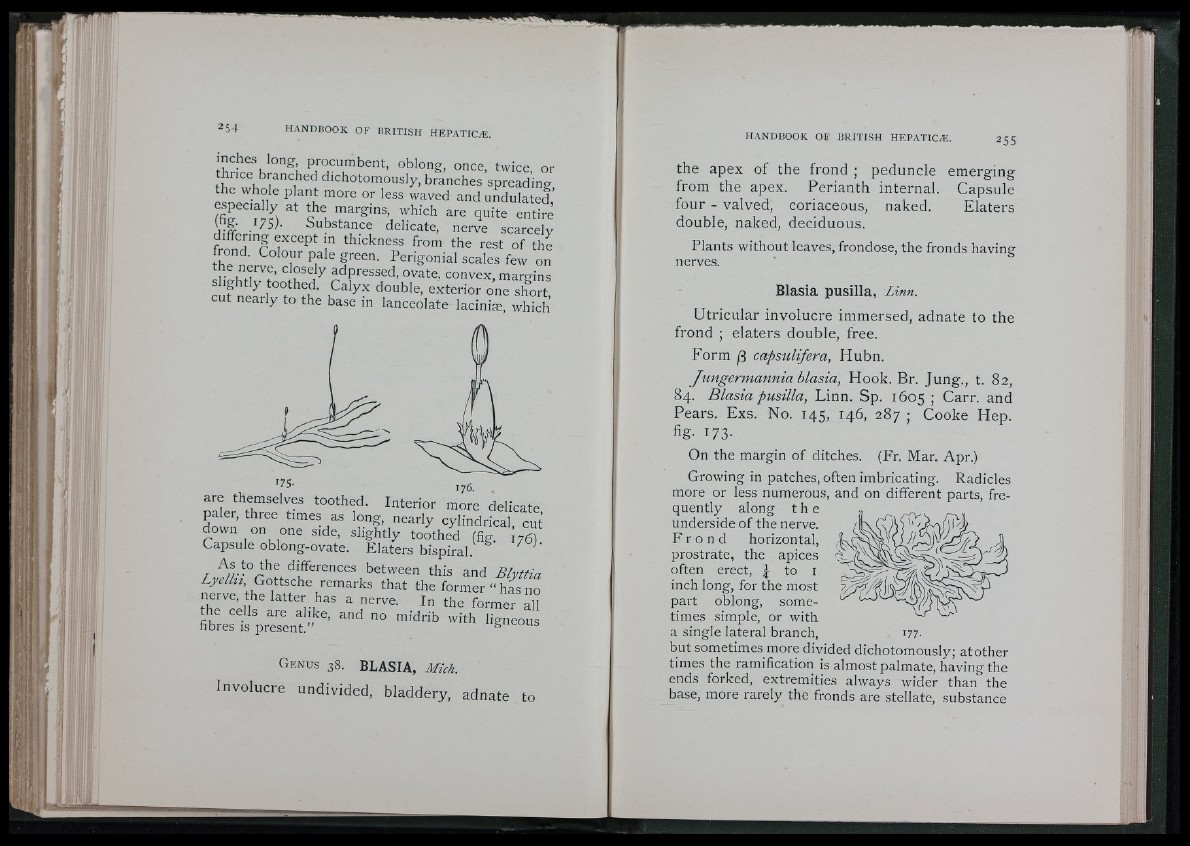
J ! i
f.;:L . II
í • '
2.S-I HANDBOOK OF BRITISH HEPATICÆ.
h ir e h oblong, once, twice, or
thrice bl anched dichotomously, branches spreading
i f iT L i d margms, which are quite entire
.^75)- Substance delicate, nerve scarcelv
differing except in thickness from the rest o f the
I h T t i''" P,"" Perigonial scales few on
the nerve, closdy adpressed, ovate, convex, margins
slightly toothed. C a lyx double, exterior one short
cut nearly to the base in lanceolate laciniæ, which
are themselves toothed. Interior more delicate
paler, three times as long, nearly cylindrical cut
down on one side, slightly toothed (fig. J e )
Capsule oblong-ovate. Elaters bispiral. ^
A s to the differences between this and BlvUia
Cottsche remarks that the former “ h i no
nerve, he latter has a nerve. In the former i l
the cells are alike, and no midrib with ligneous
fibres IS present. ’ "bucous
G enus 38. BLASIA, Mich.
Involucre undivided, bladdery, adnate to
the apex of the frond ; peduncle emerging
from the apex. Per ianth internal. Capsule
four - valved, coriaceous, naked. Elaters
double, naked, deciduous.
Plants without leaves, frondose, the fronds having
nerves.
Blasia pusilla, Linn.
Ut r icular involucre immersed, adnate to the
frond ; elaters double, free.
Form j3 capsulifera, Hubn.
Jungermannia blasia, Hook. Br. Jung., t. 82,
84. Blas ia pusilla, Linn. Sp. 1605 J Carr, and
Pears. Exs. No. 145, 146, 287 ; Co o ke Hep.
fig. 173.
On the margin of ditches. (Fr. Mar. Apr.)
Crowing in patches, often imbricating. Radicles
more or less numerous, and on different parts, frequently
along t h e
underside of the nerve.
F r o n d horizontal,
prostrate, the apices
often erect, J to i
inch long, for the most
part oblong, sometimes
simple, or with
a single lateral branch, i77-
but sometimes more divided dichotomously; atother
times the ramification is almost palmate, having the
ends forked, extremities always wider than the
base, more rarely the fronds are stellate, substance